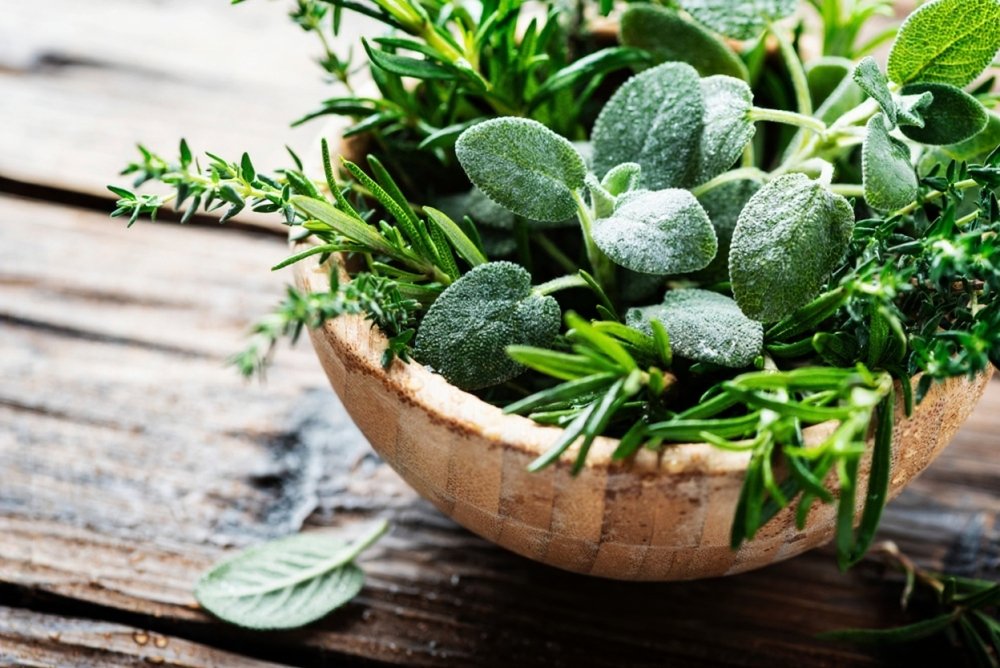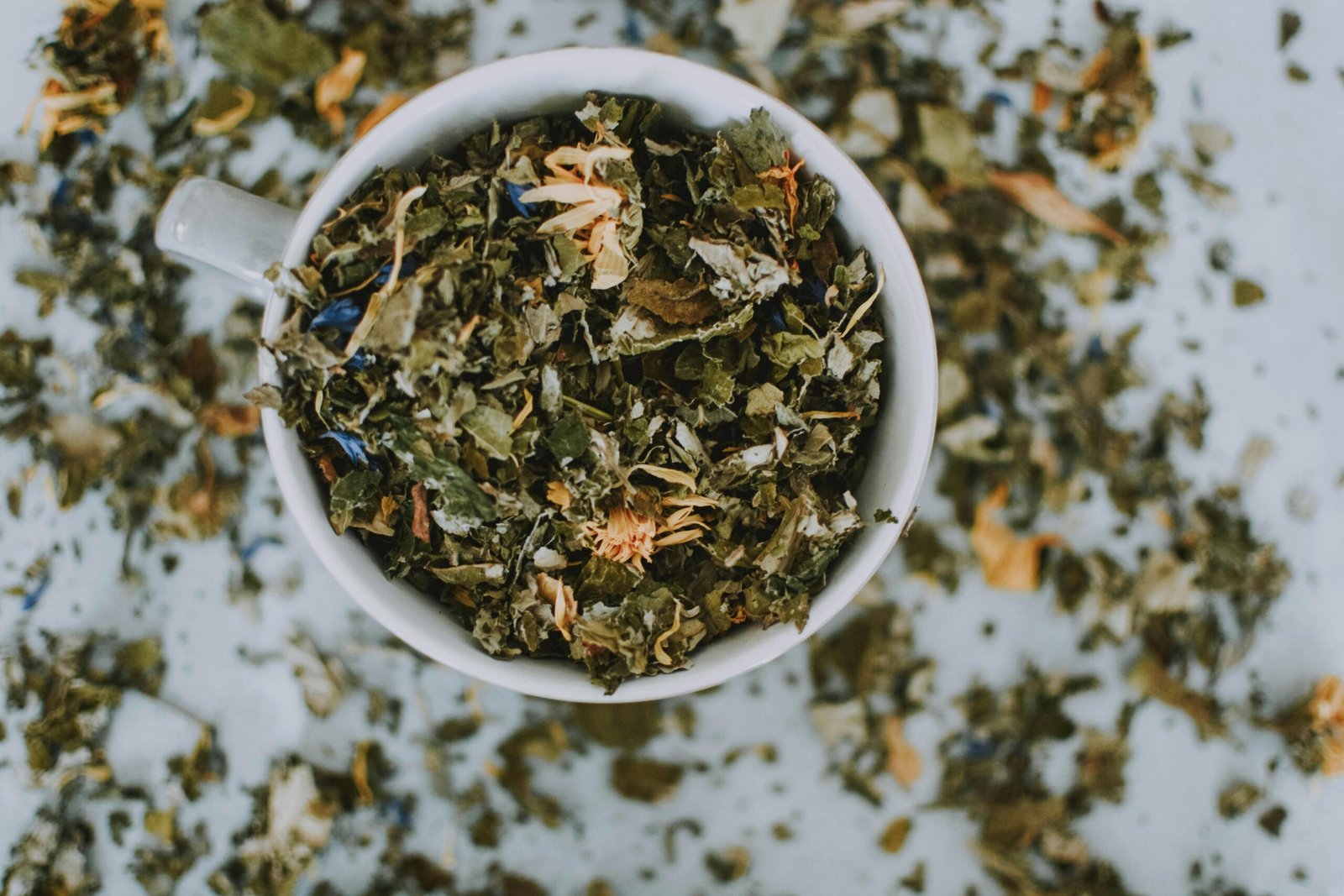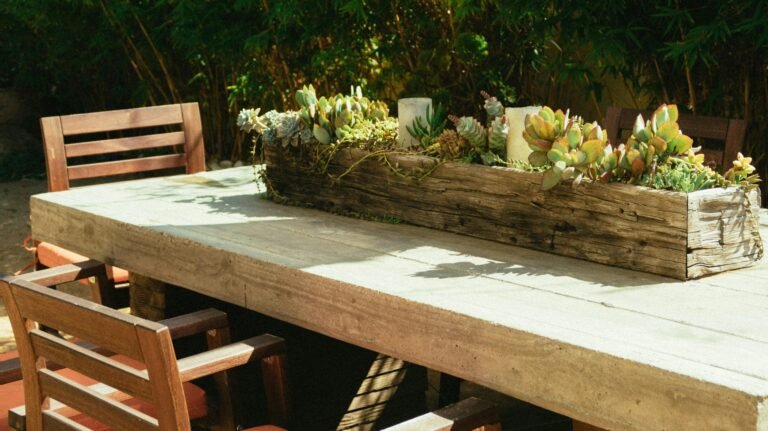Starting a kitchen herb garden doesn’t have to be complicated. With the right plants, you can enjoy fresh flavors right from your windowsill or balcony.
But maybe you’ve tried this before. You bought that supermarket basil plant, stuck it on your windowsill, and two weeks later… it was drooping, yellowing, and guilt-inducing. I’ve been there myself. My first basil plant didn’t last more than a fortnight on the windowsill, and it felt like proof I couldn’t keep anything alive. Or maybe you’ve never even gotten that far because you didn’t know where to start.
Here’s the good news: growing herbs doesn’t have to be frustrating, time-consuming, or reserved for people with sprawling gardens and green thumbs. You just need to know which herbs will give you the most bang for your buck and which ones won’t punish you for forgetting to water them one day. Starting a kitchen herb garden doesn’t have to be complicated, with the right choices, you’ll have fresh herbs thriving in no time.
I’ve put together a list of 10 easy, reliable herbs that work brilliantly in small kitchen gardens. These are the ones you’ll actually use, that won’t wither at the first sign of neglect, and that can turn a simple dish into something far more flavourful.
Whether you’re starting with a sunny windowsill or a few pots on the balcony, these are some of the best herbs to grow indoors for a fuss-free, rewarding herb garden.
What Makes a Great Kitchen Herb?
Not all herbs are created equal — especially when you’re tight on space, time, or patience. So before diving into the top 10 list, here’s what sets the must-haves apart from the ones that just look good on a seed packet.
1. They’re easy to grow.
You don’t want to play plant babysitter. A great kitchen herb should be forgiving. That means it doesn’t need constant watering, precise temperatures, or a greenhouse setup to survive.
2. They’re used often in everyday cooking.
No point growing something that only works in one obscure recipe. The best herbs are the ones you’ll reach for regularly — think pasta, stir-fries, salads, marinades, and even drinks.
3. They grow well in small spaces.
You’re not working with a backyard jungle here. These herbs need to thrive in pots, window boxes, or even recycled containers on your kitchen counter. For step-by-step advice on lighting, watering, and container choice, the Penn State Extension’s guide to growing herbs indoors is a great resource.
4. They grow back after harvesting.
A good herb plant keeps on giving. You want varieties that’ll bounce back quickly after a trim, so you can keep using them without constantly replanting.
5. They’re not fussy about light.
While most herbs love sunlight, the best ones for kitchens are the kind that won’t die the moment a cloud rolls over. We’ll cover a few that tolerate lower light too.
Top 10 Must-Have Herbs for an Easy Kitchen Herb Garden
These herbs hit the sweet spot between low-effort and high-reward. They’re perfect for beginners, versatile in the kitchen, and happy to grow in pots. These are some of the easiest herbs for a kitchen herb garden, beginner-friendly and packed with flavor you’ll actually use. These herbs hit the sweet spot between low-effort and high-reward. The Royal Horticultural Society recommends herbs like basil, mint, rosemary, and bay for small containers, making them perfect starters for any kitchen herb garden.

1. Basil
Why it’s great: The ultimate kitchen herb. Perfect for Italian dishes, Thai curries, and fresh summer salads.
Growing tip: Loves warmth and sunlight. Keep it on a sunny windowsill, and pinch off flowers to encourage leaf growth. In my own kitchen herb garden, basil was the first plant I grew successfully and once I learned to pinch off flowers, it kept producing leaves for months.
Use it in: Pasta sauces, pesto, caprese salad, Thai stir-fries. Basil is one of the most essential fresh herbs for cooking.
2. Parsley (Flat-leaf)
Why it’s great: A classic garnish that’s also great in cooking. Flat-leaf parsley has more flavour than curly varieties.
Growing tip: Needs regular watering and partial to full sun. Snip stems from the base to encourage regrowth.
Use it in: Soups, tabbouleh, stews, chimichurri.
3. Mint
Why it’s great: Super refreshing and fast-growing. Adds a bright lift to sweet and savoury dishes.
Growing tip: Grow it in its own pot — it spreads aggressively. Prefers light shade to full sun. I learned this the hard way. I once planted mint alongside parsley, and within weeks the mint had completely taken over the pot.
Use it in: Teas, mojitos, salads, lamb dishes.
4. Rosemary
Why it’s great: Woody, fragrant, and brilliant in roasted dishes. Also acts like a mini air freshener.
Growing tip: Needs good drainage and lots of sunlight. Don’t overwater — it hates soggy roots.
Use it in: Roasted potatoes, meats, focaccia, infused oils.
5. Thyme
Why it’s great: Low-maintenance and very flavourful. Works well fresh or dried.
Growing tip: Likes full sun and dry soil. Trim regularly to keep it bushy.
Use it in: Poultry, stews, vegetables, Mediterranean dishes.
6. Chives
Why it’s great: Mild onion flavour without the tears. A little goes a long way.
Growing tip: Can tolerate less sun than most herbs. Trim from the base to keep it productive. One reason I love growing chives in my kitchen herb garden is how forgiving they are, even in less sunny spots.
Use it in: Omelettes, potatoes, soups, dips.
7. Oregano
Why it’s great: Strong flavour, especially when dried. A pizza and pasta essential.
Growing tip: Loves full sun and doesn’t need much water. Pinch off flowers to keep the leaves coming.
Use it in: Italian sauces, pizza, grilled meats.
8. Coriander (Cilantro)
Why it’s great: Fresh and citrusy. Essential for Mexican, Indian, and Asian cuisine.
Growing tip: A bit fussy — prefers cooler temps. Sow in small batches every few weeks for a steady supply.
Use it in: Salsas, curries, salads, chutneys.
9. Sage
Why it’s great: Earthy and aromatic. Pairs beautifully with rich, savoury dishes.
Growing tip: Likes full sun and dry conditions. Don’t overwater.
Use it in: Stuffing, butter sauces, roasted veg, pork dishes.
10. Bay (Bay Laurel)
Why it’s great: A slow grower, but the leaves last forever and add depth to soups and sauces.
Growing tip: Needs a large pot and bright spot. Grows slowly but steadily. Even slow-growing bay can become a backbone of your kitchen herb garden, offering leaves you can use year after year.
Use it in: Stews, broths, slow-cooked dishes.
Tips for Success: How to Keep Your Kitchen Herb Garden Thriving
You don’t need to be a gardening expert to keep your kitchen herb garden going strong – a few simple habits make all the difference.
1. Don’t overwater.
Most herbs hate soggy soil. A good rule? Stick your finger into the soil — if the top inch is dry, it’s time to water. If it’s still damp, leave it. The University of Minnesota Extension notes that most herbs do best when you water only after the topsoil is dry to the touch and never leave pots sitting in water.
2. Choose the right pots.
Make sure your containers have drainage holes. Herbs left in standing water will quickly rot. Terracotta pots are a great choice — they let the soil breathe.
3. Use quality soil.
Skip the cheap stuff. Go for a light, well-draining potting mix (look for one labelled for herbs or vegetables). It gives roots the airflow they need.
4. Give them enough light.
Most herbs need at least 6 hours of sunlight a day. A sunny kitchen windowsill or balcony is perfect. If your space doesn’t get much natural light, consider a small grow light. It makes it possible to enjoy the best herbs to grow indoors year-round.
➡️ More on this topic: 7 Essential Tips to Successfully Grow Edible Plants Indoors All Year Round
5. Harvest often — but the right way.
Regular snipping encourages growth. But don’t just take random leaves. Cut just above a leaf node (where two leaves grow from the stem). This helps the plant grow back bushier.
6. Rotate your pots.
If your herbs lean toward the light, rotate them every few days. This keeps them growing evenly and avoids that “lopsided plant” look. I noticed this with my rosemary. Once I started rotating the pot every few days, the plant grew straighter and bushier instead of leaning awkwardly toward the window.
7. Feed them occasionally.
You don’t need to go overboard, but a light feed with an organic liquid fertiliser every few weeks can keep herbs productive — especially if you’re harvesting regularly.
➡️ More on this topic: Best Organic Fertilizers for Thriving Veggies and Flowers
Bonus: Herbs to Avoid if You’re Just Starting
Some herbs sound great on paper but turn into more trouble than they’re worth — especially when you’re just getting started. While these herbs are tempting, they can cause frustration in a kitchen herb garden if you’re a beginner. Here are a few to skip (for now).

1. Tarragon
Why to avoid: It’s a bit of a diva — prefers cooler climates and needs very specific conditions to thrive. Also not as widely used in everyday cooking unless you’re big on French cuisine.
2. Lavender
Why to avoid: Beautiful, yes. But it’s tricky to grow indoors and doesn’t play a major role in most savoury dishes. Needs dry soil, lots of sun, and lots of patience.
3. Dill
Why to avoid: Dill grows fast — and then bolts even faster. It has a short growing window and doesn’t like being transplanted, which can frustrate beginners.
4. Chervil
Why to avoid: Not very forgiving. It needs just the right amount of light and moisture, and bolts quickly in warm weather. Unless you’re cooking a lot of delicate French dishes, you won’t miss it.
5. Coriander (if you hate it)
Why to avoid: Coriander (aka cilantro) is polarising — to some, it tastes like soap. If you’re in that camp, don’t bother growing it just because it’s popular.
If any of these are on your wish list, you can always come back to them once you’ve got a few easier herbs under your belt. Start simple, build confidence, and then branch out.
Wrap-Up: Start Small, Grow Confident
You don’t need a garden. You don’t need fancy tools. And you definitely don’t need to grow every herb under the sun to enjoy the fresh, flavour-packed punch herbs bring to your cooking.
Start with just two or three from this list — basil, mint, or rosemary are great easy herbs for beginners that build your confidence fast
Even with just rosemary and mint, my kitchen herb garden has completely changed how I cook. Fresh sprigs at arm’s reach make simple dishes taste special. Growing herbs isn’t about perfection — it’s about having a few green allies nearby that make your meals taste better with fresh herbs for cooking.
Give it a go — your future self (and your taste buds) will thank you.
FAQ: Kitchen Herb Gardens
Alex is the creator of Homely Haven, a space dedicated to simple, stylish ideas for interiors and gardens alike. With a passion for cozy living rooms, inviting outdoor spaces, and practical DIY solutions, Alex shares tips and guides that help turn any house into a true home.
From budget-friendly decorating hacks to weekend garden projects, the goal is always the same: to inspire you to create spaces that feel personal, beautiful, and welcoming. When not writing, Alex is usually rearranging furniture, sketching new garden layouts, or exploring design trends for the next project.








